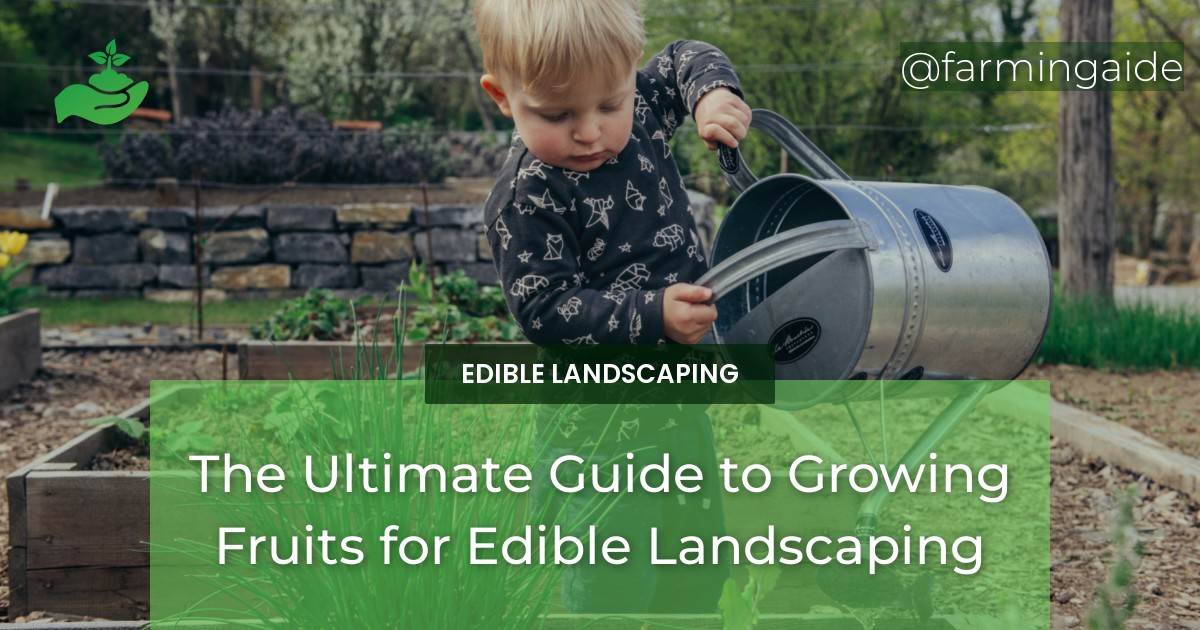Are you interested in creating a beautiful and functional landscape that also provides you with delicious fruits? Look no further! This ultimate guide to growing fruits for edible landscaping will provide you with all the information you need to get started. Whether you have a small backyard or a large garden, there are plenty of fruit trees and bushes that can thrive in your space. With proper care and maintenance, you can enjoy a bountiful harvest of fresh and organic fruits right from your own backyard. Read on to discover the secrets of successful fruit tree and bush care, as well as tips for incorporating edible fruits into your landscape design.
Choosing the Right Fruits for Your Landscape
The first step in growing fruits for edible landscaping is to choose the right fruits that will thrive in your climate and growing conditions. Consider factors such as sunlight requirements, soil type, and available space before making your selections. Here are some popular choices for edible landscaping fruits:
- Apple trees
- Pear trees
- Cherry trees
- Peach trees
- Plum trees
- Blueberry bushes
- Raspberry bushes
- Strawberry plants
Preparing the Soil for Planting
Before planting your fruit trees or bushes, it’s important to prepare the soil to provide them with the best growing conditions. Start by testing the pH of your soil to determine if any amendments are necessary. Most fruits prefer a slightly acidic soil with a pH range of 6.0 to 6.5. If your soil is too alkaline, you can lower the pH by adding sulfur or peat moss. On the other hand, if your soil is too acidic, you can raise the pH by adding lime or wood ashes. Additionally, make sure the soil is well-draining to prevent waterlogged roots, as excessive moisture can lead to root rot and other diseases.
ALSO READ
Planting and Care Tips for Fruit Trees
When planting fruit trees, it’s important to choose a suitable location that provides adequate sunlight and good air circulation. Dig a hole that is wide and deep enough to accommodate the tree’s root system, and gently spread out the roots before backfilling with soil. Water the tree thoroughly after planting, and apply a layer of mulch around the base to help conserve moisture and suppress weeds. Regularly water and fertilize your fruit trees, and prune them annually to promote healthy growth and fruit production. Keep an eye out for common pests and diseases, and take appropriate measures to control them.
Planting and Care Tips for Fruit Bushes
Fruit bushes, such as blueberries and raspberries, can be a great addition to your edible landscaping. Like fruit trees, they require a suitable location with ample sunlight and well-draining soil. Dig a hole that is wide and deep enough to accommodate the bush’s root system, and mix in some compost or organic matter to enrich the soil. After planting, water the bush thoroughly and apply a layer of mulch to conserve moisture. Prune the bushes annually to remove dead or diseased branches and promote new growth. Regularly water and fertilize the bushes to ensure healthy growth and a plentiful harvest.
ALSO READ
Incorporating Edible Fruits into Your Landscape Design
One of the key principles of edible landscaping is to seamlessly integrate fruit trees and bushes into your overall landscape design. Consider the size and shape of the plants when planning their placement, as well as their aesthetic appeal throughout the seasons. For example, fruit trees with beautiful blossoms in the spring can add a stunning visual element to your landscape, while trees with colorful fall foliage can create a vibrant autumn display. You can also use trellises or arbors to support climbing fruit vines, such as grapes or kiwis, and create vertical accents in your garden. By carefully selecting and arranging your edible plants, you can create a functional and visually appealing landscape that provides you with a delicious harvest.
With the tips and information provided in this ultimate guide, you can confidently grow fruits for edible landscaping in your own backyard. Remember to choose the right fruits for your specific growing conditions, prepare the soil properly, and provide adequate care and maintenance. By incorporating edible fruits into your landscape design, you can enjoy the beauty and bounty of nature all year round.
RELATED ARTICLES:


